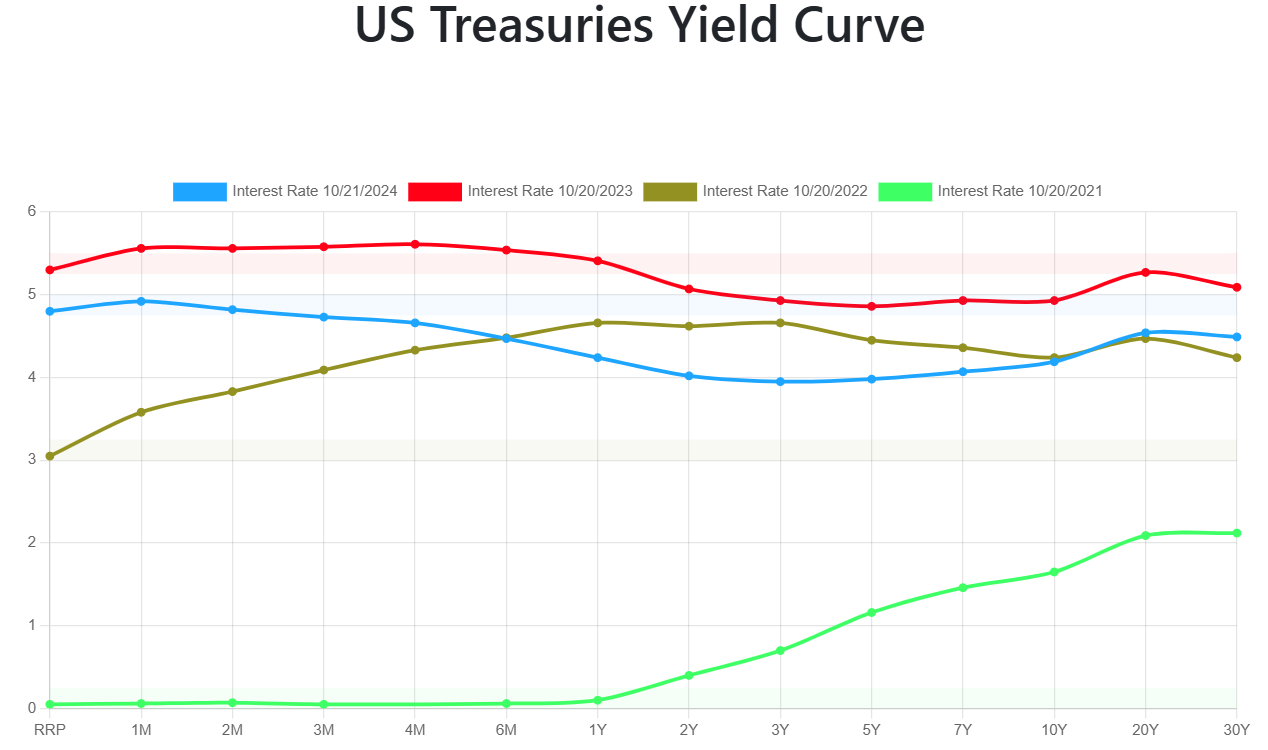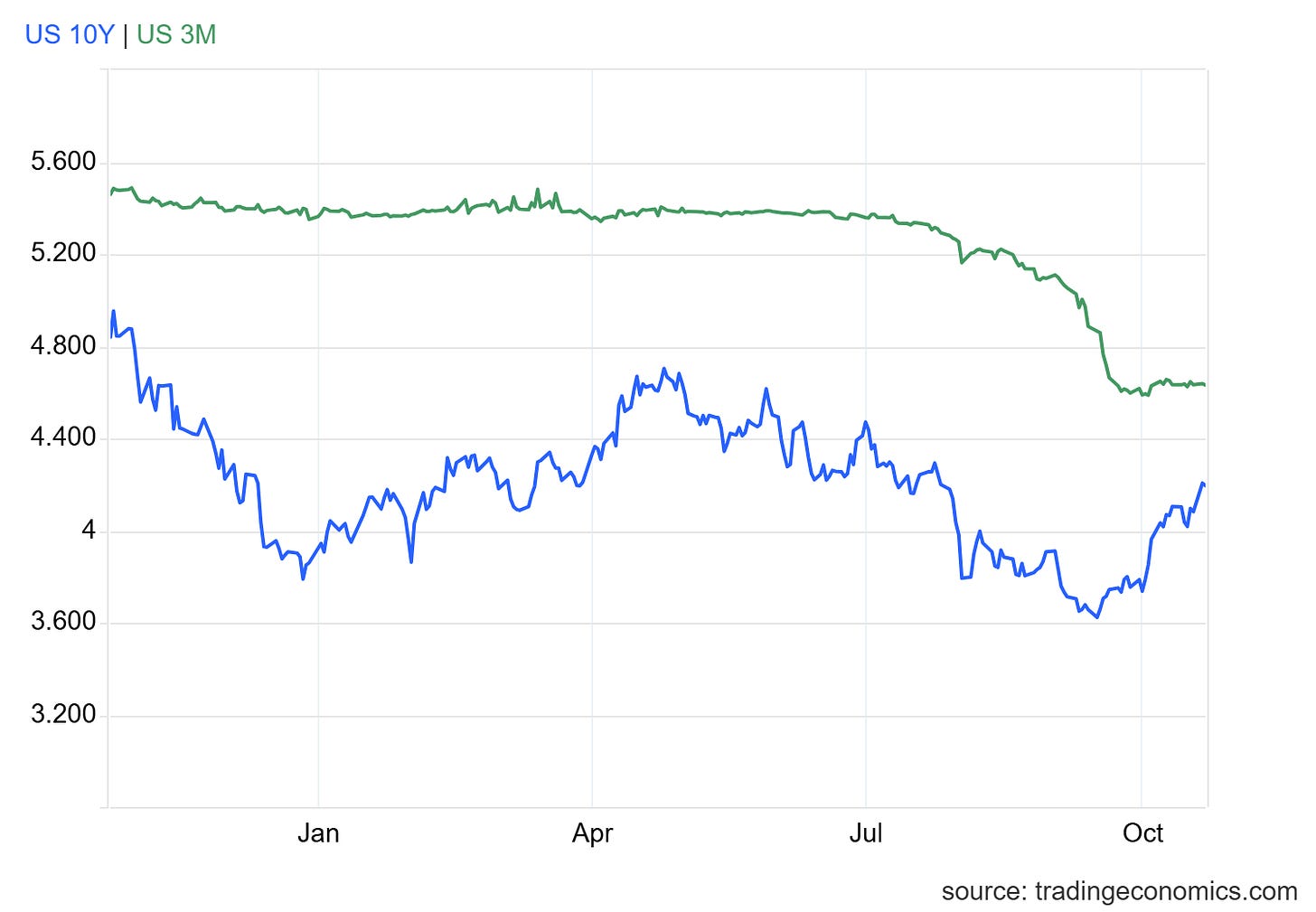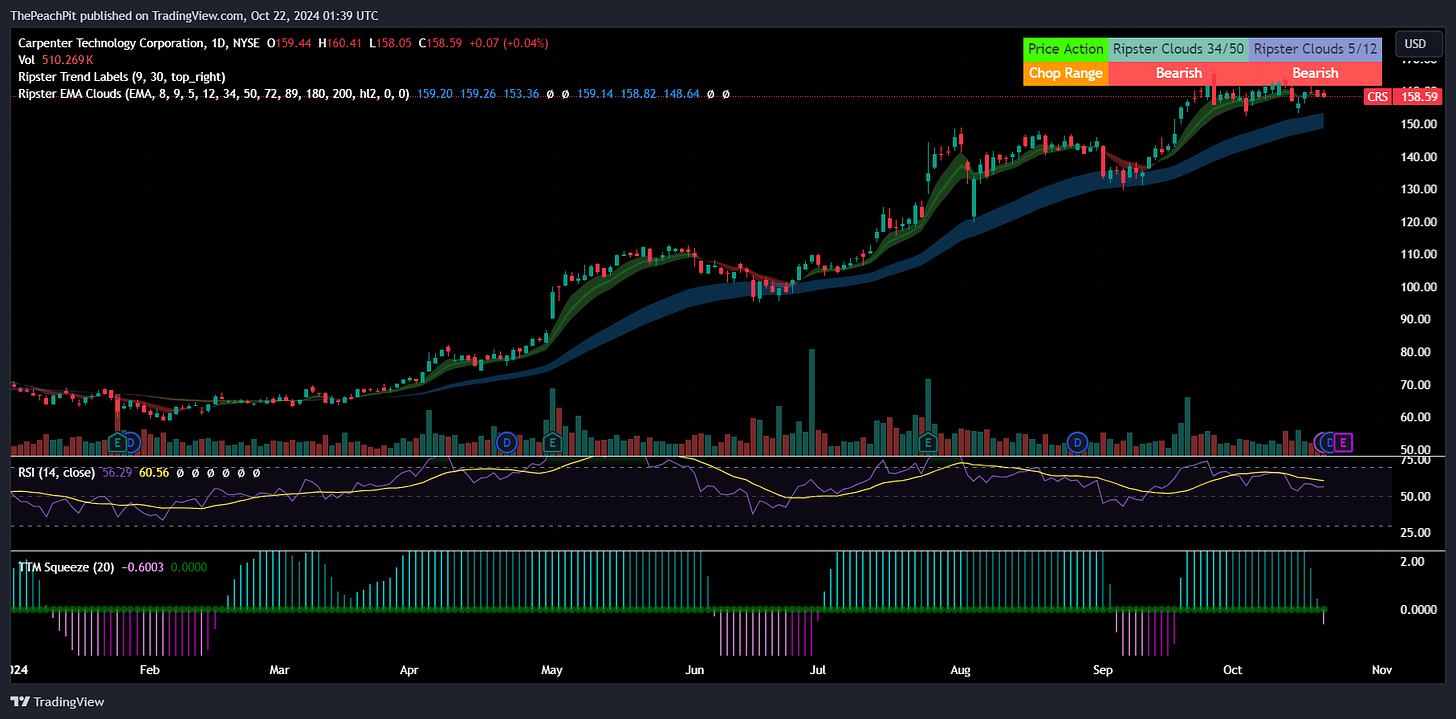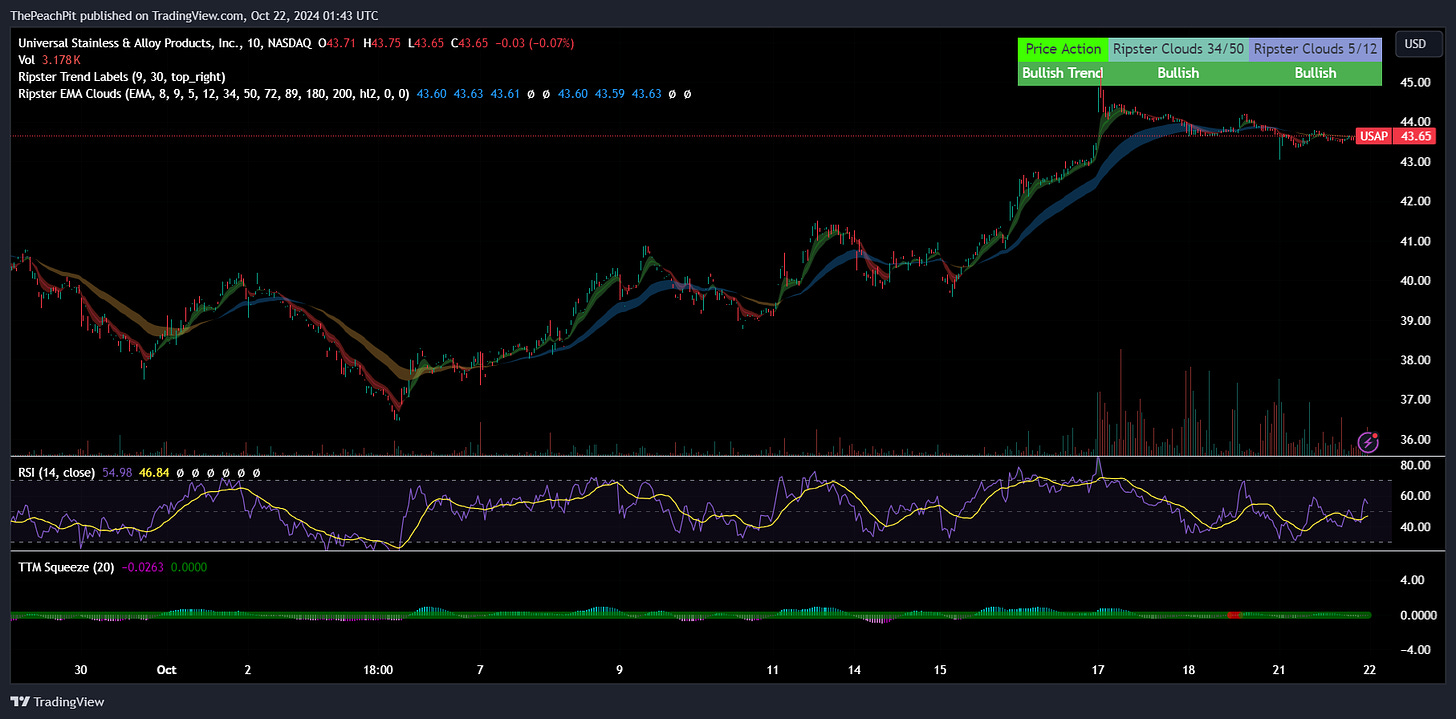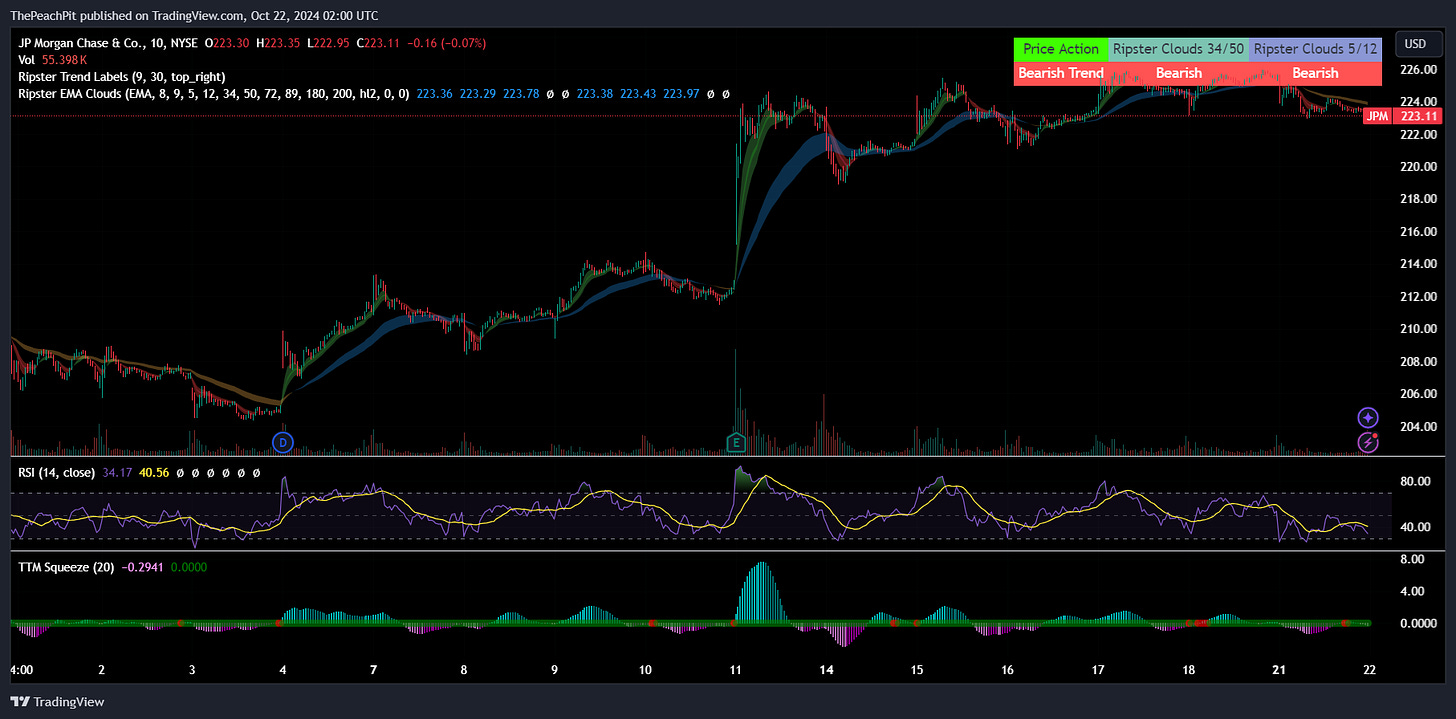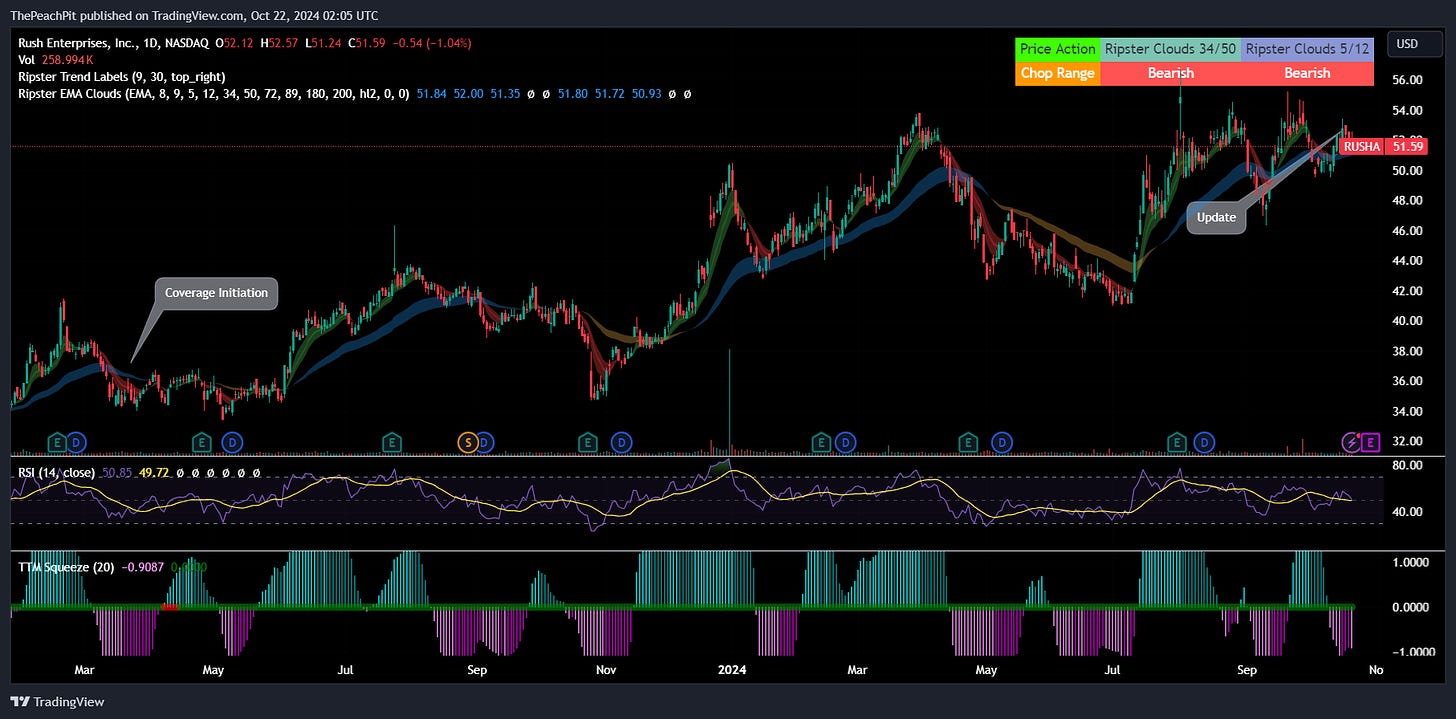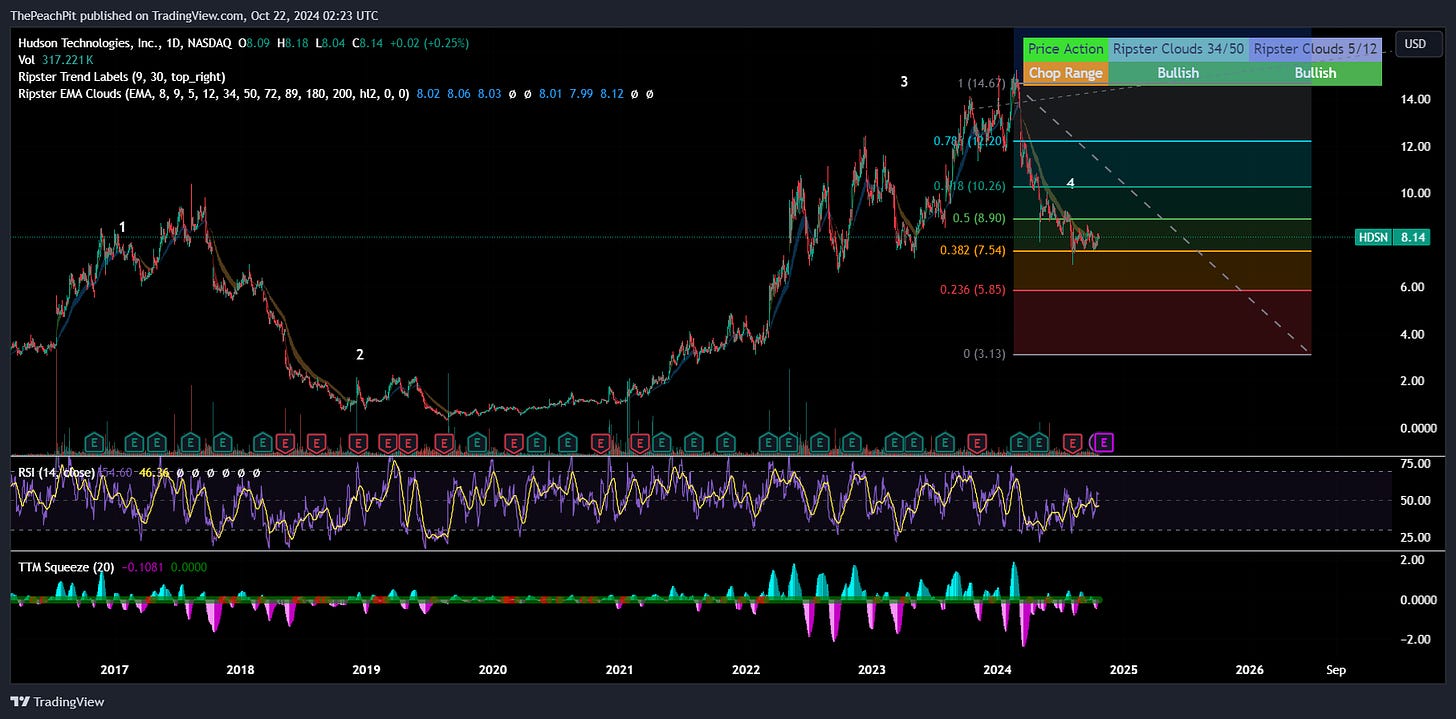The yield curve is suspiciously flattening with the dispersion between the 10-year and the 3-month tightening to -43.5bps. This, of course, was primarily driven by the Fed’s 50bps rate cut back in September, narrowing the inversion of the yield curve.
What’s strange is how the 10-year note has sold off since the rate cut. Does this mean that economists have given up on additional cuts for the duration of the year? Perhaps it means that it is time to migrate into riskier assets.
I was a little late to the party in working this through as my attention was focused on the domestic market, but emerging markets will theoretically benefit from US interest rate cuts. How does this work?
Roughly 82% of emerging market debt is dollar-denominated, up from 70% at the end of 2021. This theoretically provides stability in markets that may face a high degree of inflation and may result in a severe decline in the value of the local currency. Having these bond payments made in USD, assuming they are paid, guarantees a certain value retained with less foreign exchange risk. The two countries with the largest percentage of dollar bonds are Argentina and Colombia at 55% and 30%, respectively.
The Federal Funds Rate essentially controls the relative value of the dollar. Going back to Econ 101, the relative value of the dollar is essentially based on the domestic rate when compared to the foreign rate over a period of time; i.e. If the Fed drops the base rate by 50bps and the UE keeps its base rate stagnant, the USD will theoretically devalue relative to the Euro over time. Assuming the foreign currency is not pegged to the USD, this can be beneficial to emerging markets as the relative value of the foreign currency gains over the USD.
Though the change in value of the currency may not directly impact foreign enterprises’ cash flow, the belief that a stronger foreign currency brings value is enough for investors. This example, of course, assumes that the foreign entity does not do business in the US.
So, in short, if further rate cuts are on the docket, emerging markets may outperform in the short run.
Aside from a few major move days, the markets have remained resilient with no signs of slowing. Nvidia (NVDA) drove the sledgehammer into the pillar of hope for those seeking a bear market with its press release a few weeks back suggesting that the latest Blackwell B100 GPUs are sold out for the next year.
Outside of tech and a few specialty industries, the economy does appear to be modestly breaking down in slow motion. What really baffles me is how domestic freight is in such an extreme bear market and consumer consumption continues to print bullish signals.
I have discussed this phenomenon in previous editions of this newsletter, so I’ll keep it brief, but restaurant volumes continue to remain suppressed. Talk to anyone in the services industry and you’ll hear a story staler than a day-old French loaf: tips are down, ticket volumes are down, and consumers are rotating into budget items.
One thing I’ll note from personal experience is that concert attendance appears to be declining modestly. Aside from the few major touring acts and heavily attended festivals, I have noticed fewer and fewer concertgoers for bands that aren’t the “must see” act of the year. Perhaps Minnesota and St. Louis aren’t the best samples for this sort of observation, but seeing this occur in two markets, it makes me wonder if this is happening elsewhere around the states.
Let’s look at some investment ideas for the week:
Carpenter Technology Corporation (NYSE: CRS)
I published this on the Substack later than usual on Friday. As readers would have noted, I had to pivot midway through my research due to Universal Stainless & Alloy Products (USAP) announcing its acquisition by Aperam, a Luxembourg-based specialty steelmaker. As a result, there were a few minor errors in the valuation table that have since been corrected. The error was only the label and not the actual data. Since I reuse the model across my research, minor details occasionally get overlooked.
Carpenter Technology Corp. runs a similar shop similar to USAP with significant product and industry overlap and has experienced a similar cyclical upswing in the last quarter as a result of higher volumes demand and stronger pricing for specialty alloys. I’m forecasting significant upside as aerospace & defense spending may increase as a result of the global unrest. I highly recommend reading through the details of the report as it has the potential to bring tech-like capital appreciation while not being directly tied to the industry.
Carpenter Technology Corp. (NYSE: CRS): High Growth Potential Outside Of Tech
Universal Stainless & Alloy Products (NASDAQ: USAP)
Universal Stainless & Alloy Products Merger Arbitrage Play
As mentioned above, USAP will be acquired by Aperam with an expected close date in q1’25. Given the share price, investors can seek out a merger-arbitrage play here. By no stretch is it a homerun; however, as the golf analogy goes: drive for flash, putt for cash. Even if the deal falls through, you’ll be buying a quality company that I have reason to believe remains significantly undervalued.
Though I didn’t mention it in the report, it somewhat baffles me that USAP and CRS didn’t merge. Given the similar size and company construct, a merger would have allowed for the two firms to broaden their regional exposure and optimize facility operations.
JPMorganChase (NYSE: JPM)
JPMorgan Chase May Face Some Macro Headwinds
In short, much of JPM’s headwinds will pertain to the firm’s exposure to the rates market. If the curve steepens while remaining at a relatively similar level, the firm will realize tailwinds. Further declines in the Federal Funds rate may create some challenges for the bank, especially if the curve remains inverted.
Theoretically, the firm should benefit from a declining rate as enterprises may seek out additional debt financing or to refinance existing debt. Though I do not believe rates are low enough to significantly impact this line item, firms that depend on debt financing for projects may transition financing through the debt markets over the equity markets. This can be beneficial to equities going forward if the Fed cuts further.
Given the impending CRE debt wall, I have reason to believe that the Fed will ease up rates in the next year. There will be roughly $2.1b in debt coming due between 2025-2026 that will likely require refinancing as a result of the significantly elevated office vacancy rates. If the downcycle does not occur, we will likely witness further bankruptcies in the space as a result of higher cost of capital.
You can read the full report on the topic here:
ThePeachPit Model Portfolio Vol. XXX: They All Can't Be Zingers
As for JPM, I was relatively neutral on the name. The stock’s valuation has far deviated from parity to book value and is trading less like a bank and more like a growth company. The bank is the largest asset aggregator in the US, after all.
Rush Enterprises (NASDAQ: RUSHA; RUSHB)
Rush Enterprises Faces Macro Headwinds As Freight Rates Slump
I updated my guidance on Rush Enterprises after initiating coverage nearly two years ago. In short, the stock has performed stupendously well since the time of my initial report. Since then, freight rates have cratered with the used truck market facing significant pricing headwinds. New vehicle prices have maintained their highs with the firm’s average class-8 truck selling at $191,000 per vehicle. As the freight market has taken a turn, as mentioned in my coverage of J.B. Hunt (JBHT) and Dana Inc. (DAN), the vehicle market has become relatively bloated with the possibility of further headwinds going into 2025. The one area that may support the firm is the EPA ruling on diesel engine emissions that may lead to fleet renewals going into 2027 when the rule will be enacted. Until then, fleets will likely play to the macroeconomic environment and remain relatively flat-to-down throughout the duration of eFY24 and eFY25.
Boss Energy Limited (OTCQX: BQSSF)
Boss Energy: Moving Ahead With Production
I covered Boss Energy back in May 2024 and updated my coverage on October 17, 2024. The firm has significantly progressed since initiating coverage and is currently ramping up production at its Honeymoon Project in Australia. The firm also held a grand opening at its Alta Mesa processing facility in South Texas to begin uranium production stateside.
One factor that went unmentioned is the substantial commission fee for trading BQSSF shares. Because of this, I recommend looking at Energy Fuels (UUUU) and Uranium Energy Corp. (UEC) as alternative uranium mining strategies.
Hudson Technologies (NASDAQ: HDSN)
Hudson Technologies Sees Upside To Low Refrigerant Pricing
Hudson Technologies is currently going through a down market for refrigerant pricing as a result of illegal imports of virgin HFCs. This has significantly impacted revenue and margins in the last year, and in turn, has resulted in poor share price performance.
Nonetheless, the firm is in a strong position of buying power as the firm cycles out higher cost inventory for lower cost through FIFO reporting. If refrigerant prices remain stagnant or improve, Hudson will likely realize strong improvements to profitability as a result.
Shares are likely relatively close to the bottom, creating an opportune time to begin building up a position. The shares performed well since initiating coverage on March 30, 2023; however, the stock price has since reached its near-term peak and is undergoing a trough. Looking ahead, the company will likely see tailwinds from pricing and EPA regulation restricting virgin HFCs from being produced and imported.
ThePeachPit Model Portfolio
Keep reading with a 7-day free trial
Subscribe to Monte Independent Investment Research to keep reading this post and get 7 days of free access to the full post archives.





